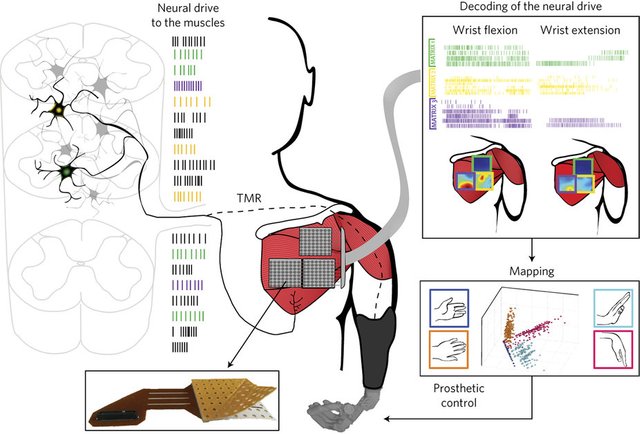Arm prosthesis receives nerve impulses from the spinal cord
Scientists have developed a technology that allows an arm prosthesis to sense nerve signals from the spinal cord and make movements controlled by the brain.
To control the robotic prosthesis the patient has to think as if he is controlling a phantom arm and imagine some simple movements, such as pinching with two fingers. Sensors integrated into the prosthesis interpret the electrical signals, emitted by the neurons of the spinal cord, as an order.
Arm prostheses currently on the market are controlled by the patient through the muscles in the shoulder or arm that are often damaged. It is a technology that only allows one or two movements to hold, which causes about half of the people to reject it.
The team of researchers who published the study in the journal Nature Biomedical Engineering today said that detecting signals from spinal motor neurons (on the basis of muscle control) in parts of the body not damaged by amputation, instead of using remaining muscle fibers More signals can be detected and more commands can be programmed into the robotic prosthesis, making it more functional.
The researchers did laboratory experiments with six volunteers who had been amputated from the shoulder down or just above the elbow. And after some physiotherapy training, the patients were able to make a wider range of movements than in the cases of the use of a classic robotic prosthesis.
The volunteers were able to move the elbow joint and even make radical movements, moving the wrist from side to side, or even close the hand. While it is necessary to make the technology more robust, scientists admit that the current model may be on the market in the next three years.
References:


Hi @pipokinha, I just stopped back to let you know your post was one of my favourite reads yesterday and I included it in my Steemit Ramble. You can read what I wrote about your post here.
Thanks for the support @shadowspub ;)